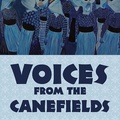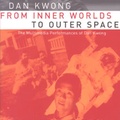While the incarceration and tragic experiences of Japanese Americans following the attack on Pearl Harbor has been well documented, Becoming American? The Art and Identity Crisis of Yasuo Kuniyoshi, by Shipu Wang, studies and investigates the activities of Americans of Japanese descent outside the World War II camps and the intense pressures with which they had to contend in the aftermath of Pearl Harbor. On December 8, 1941, Yasuo Kuniyoshi (1989-1953), an émigré Japanese artist in New York, awoke to find himself an “enemy alien” after Japan’s attack on Pearl Harbor. Becoming American? is the first scholarly book in over two decades to offer a critical evaluation of the pivotal art of Yasuo Kuniyoshi, one of the preeminent 20th century American artists.
Drawing from exhaustively researched primary sources, Dr. Wang presents an unprecedented, in-depth investigation of Kuniyoshi’s works, many of which were unexamined in previous studies, including his “anti-Japan” posters and radio broadcasts for U.S. propaganda, and his coded and increasingly enigmatic paintings. “Through the prism of an identity crisis, the book subjects Kuniyoshi’s imagery and writings to a nuanced analysis within their sociopolitical contexts that reveals them to have been vital means for the artist to engage, albeit often reluctantly and ambivalently, in discourses on American democracy and ideals in an era when racial and national origins were grounds for discrimination or even mass incarceration,” reveals Wang.
For Kuniyoshi, the historical crisis and status shift precipitated a head-on confrontation with issues of national allegiance and racial identification that he had carefully avoided addressing in his prewar art. “As an immigrant who had proclaimed himself to be as ‘American as the next fellow,’ the realization of his now precarious status catalyzed the development of an emphatic and conscious identity construct that would underlie Kuniyoshi’s art and public image for the remainder of his life,” continues Wang.
Through his rigorous and interdisciplinary archival research, Wang’s Becoming American? reevaluates the art and life of an important American artist, now largely forgotten, and offers new perspectives on American politics and ideological battles in the decades surrounding Pearl Harbor. It further illuminates the complicating factors of race, diasporas, and ideology in the construction of an American cultural identity. As one of the reviewers for the University of Hawaii Press (publisher) stated: “[Wang’s] examination of the records of the U. S. government in the post-Pearl Harbor years, during which Kuniyoshi worked for a propaganda arm of the government, sheds new light on the artist’s art and his political situation at this dramatic time. Wang’s explication of the internal artistic politics of the Office of War Information is strikingly original and well researched.” Timely and provocative, the book historicizes and elucidates the ways in which “minority” populations have been, and continue to be, both championed and marginalized for their cultural and ethnic “difference” within the twentieth-century American history.
Dr. Shipu Wang is an art historian and founding faculty of the Global Arts Studies Program (GASP) at University of California, Merced. He was promoted to Associate Professor in July 2011, five years after he started teaching at UC Merced. Wang's areas of expertise are twentieth-century visual culture and theory in the North American and Pacific Asian contexts, with specializations in (post-) modernisms and critical race theories, and secondary specializations in museum studies and modern Chinese art. He has published extensively in both English and Chinese, and continues to engage in museum and curatorial work, as well as in photography, filmmaking, and fiction writing.
Parts of his book, Becoming American?, appeared as a peer-reviewed publication, “‘Japan Against Japan’: U.S. Propaganda and Yasuo Kuniyoshi’s Identity Crisis,” in the Spring 2008 issue of American Art by the Smithsonian American Art Museum. This paper won the 2008 Patricia and Phillip Frost Essay Award, which is presented annually to an author with the “most distinguished contribution” to the Museum’s scholarly journal and it recognizes excellent scholarship by “honoring an essay that advances the understanding of the history of the arts in America and demonstrates original research and fresh ideas.” Past recipients of the Frost award include established and highly regarded scholars, making it a tremendous honor for Dr. Wang to win the prestigious award at this stage of his career.
Currently, Wang is preparing the publication of a journal paper on Eitaro Ishigaki, an Issei artist active in the U.S in the first half of the 20th century, and his paintings of African Americans in the 1930s. He is also researching for and curating a retrospective of Chiura Obata, which will be the first comprehensive survey of his long and diverse artistic production. In addition, he is working on a focused study of the international displays of American art and culture, staged by the United States Information Agency (USIA) and other cultural agencies under the moniker of Democracy, in the Cold War era, and their impact on the artistic development in postwar Taiwan, a key outpost for U.S. strategic operations in the Asian Pacific region to combat Communism.
* * *
ShiPu Wang will be at the Japanese American National Museum to discuss Becoming American? on September 24, 2011 at 2pm.
©2011 Japanese American National Museum






